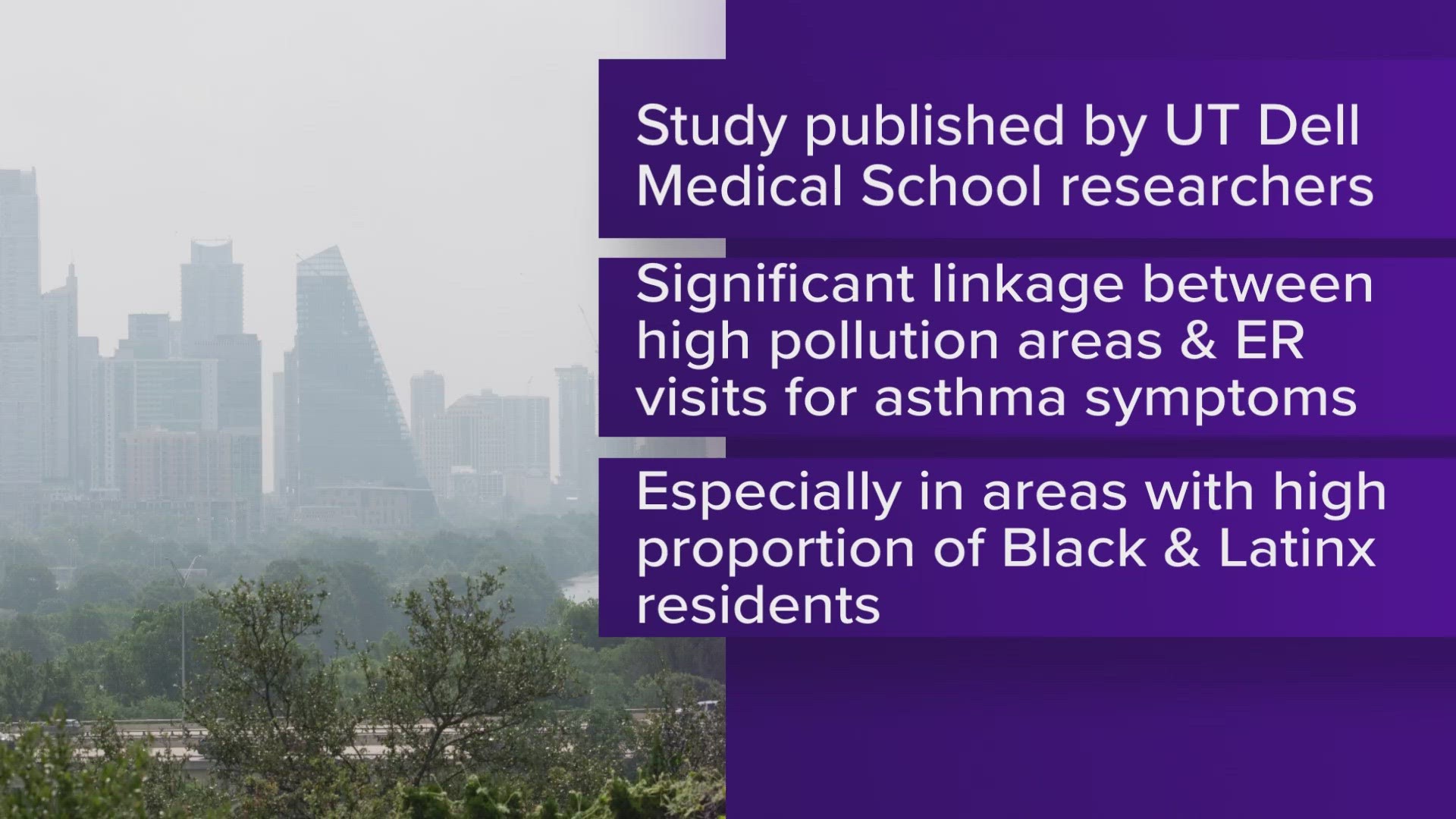AUSTIN, Texas — Researchers at the University of Texas are linking air pollution in Austin neighborhoods to an increased rate of asthma-related trips to the emergency room.
Dell Medical School researchers published a new study in the "American Journal of Respiratory and Critical Care Medicine" about the findings.
Although air pollution is relatively low in the Austin area, researchers found there was a significant link between high-pollution areas and ER visits triggered by asthma symptoms. They found this is especially true in areas with a high proportion of Black and Latino residents.
The findings come as the EPA bans the last ongoing use of asbestos in the U.S. and enacts new, stricter limits on air quality standards. The updated standards mean Austin now has higher-than-acceptable levels of fine particulate matter – tiny particles that can be inhaled into the lungs and cause breathing problems, UT researchers said.
Researchers said the study breaks new ground on examining whether higher long-term trends in air pollution in some Austin neighborhoods set those areas apart from less polluted neighborhoods in the rate of asthma-related ER visits. Neighborhoods with higher air pollution also tend to have a greater share of residents of color, UT said.
“We are exploring the connections between the neighborhood environment and lung health so that people can understand the risks they face when they live in places with consistently poor air quality,” Sarah Chambliss, the lead author of the study and a research associate in the Department of Population Health at Dell Med, said. “But beyond understanding personal risks, this is also a critical piece to the puzzle of why Black and Latinx Austinites suffer a greater burden of asthma. We know the placement of highways and industry in East Austin contributes to greater local air pollution, and this research points to the consequences that may have for racial and ethnic health disparities.”
Elizabeth Matsui, M.D., co-author of the study and professor of population health and pediatrics, said the findings underscore the urgent need for targeted interventions to mitigate pollution in neighborhoods with higher asthma burdens.
"By understanding the role of specific urban pollution sources, we can better address the underlying environmental injustices contributing to asthma disparities," Matsui said.

